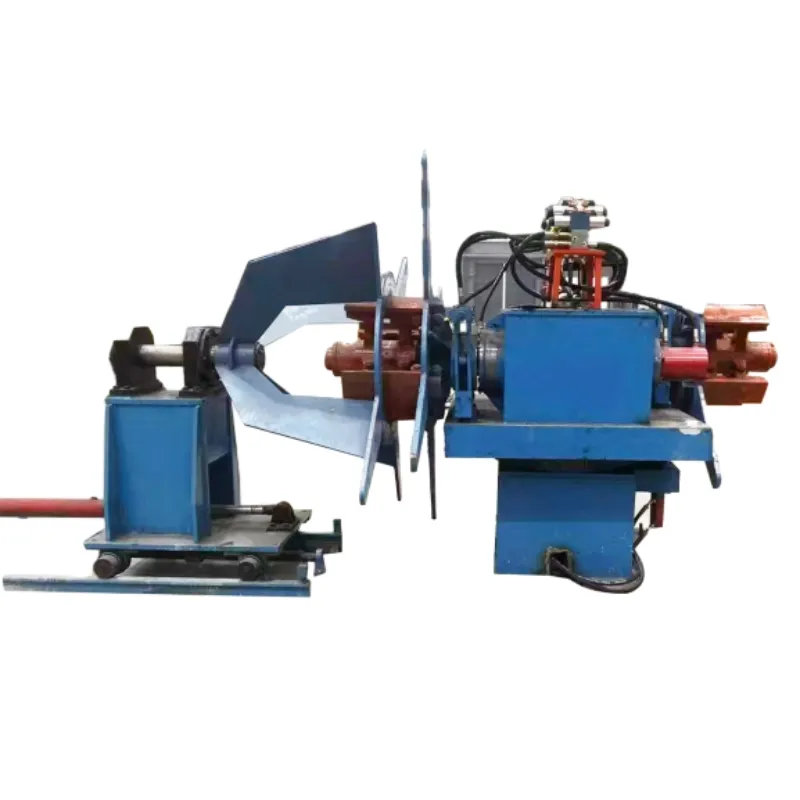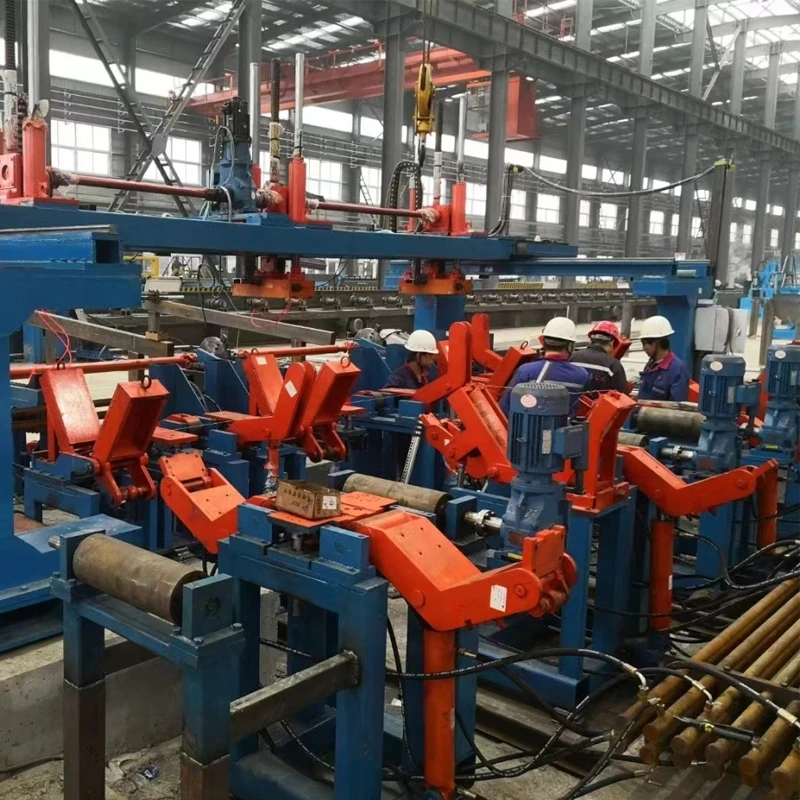Feb . 12, 2025 14:44
Back to list
Cold Cutting Flying Saw
Understanding the landscape of machine moulding can be a transformative experience for manufacturers seeking efficiency and quality in production processes. Machine moulding is pivotal in crafting precise and intricate mouldings essential for various industries. Here's an exploration into the diverse types of machine moulding, providing insights grounded in years of expertise and authoritative industry knowledge.
Blow Moulding Creating Hollow Parts with Precision Blow moulding is specifically designed for creating hollow, lightweight parts such as bottles and containers. This technique involves inflating a heated plastic tube within a mould cavity, which then takes the shape of the mould. Blow moulding is distinguished by its rapid production speed, cost-effectiveness, and minimal material wastage, making it favoured for mass production of packaging products. Throughout years of experience, industry leaders pinpoint the critical importance of air pressure control and material quality in this process. Attention to detail in these areas is essential for achieving uniform wall thickness and preventing defects such as pinholes or weak spots, thus ensuring trustworthiness and satisfaction in the final products. Rotational Moulding Versatility in Large and Detailed Products Rotational moulding is unique for its ability to produce large, hollow items in intricate shapes. This method involves loading a liquid or powdery plastic into a mould and rotating it along two axes. The slow rotation allows the material to spread and coat the inside of the mould evenly. Industries such as furniture, toys, and storage tanks frequently utilize this method for its versatility and ability to handle complex design requirements. Experts attest to its effectiveness in reducing production waste compared to other methods, arguing that the seamless, stress-free products it creates are invaluable in applications requiring durability and complex geometries. Mastery in rotational moulding demands a comprehensive understanding of material flow and cooling rates to produce quality outcomes consistently. In conclusion, the variety of machine moulding techniques available today offers manufacturers multiple options to tailor their production processes to specific industry needs. With authoritative knowledge and substantial experience, manufacturers can harness these methods to achieve enhanced efficiency, superior product quality, and customer satisfaction. Aspiring industry leaders equipped with this understanding can confidently navigate the intricate landscape of machine moulding, driving innovation and excellence in their respective domains.


Blow Moulding Creating Hollow Parts with Precision Blow moulding is specifically designed for creating hollow, lightweight parts such as bottles and containers. This technique involves inflating a heated plastic tube within a mould cavity, which then takes the shape of the mould. Blow moulding is distinguished by its rapid production speed, cost-effectiveness, and minimal material wastage, making it favoured for mass production of packaging products. Throughout years of experience, industry leaders pinpoint the critical importance of air pressure control and material quality in this process. Attention to detail in these areas is essential for achieving uniform wall thickness and preventing defects such as pinholes or weak spots, thus ensuring trustworthiness and satisfaction in the final products. Rotational Moulding Versatility in Large and Detailed Products Rotational moulding is unique for its ability to produce large, hollow items in intricate shapes. This method involves loading a liquid or powdery plastic into a mould and rotating it along two axes. The slow rotation allows the material to spread and coat the inside of the mould evenly. Industries such as furniture, toys, and storage tanks frequently utilize this method for its versatility and ability to handle complex design requirements. Experts attest to its effectiveness in reducing production waste compared to other methods, arguing that the seamless, stress-free products it creates are invaluable in applications requiring durability and complex geometries. Mastery in rotational moulding demands a comprehensive understanding of material flow and cooling rates to produce quality outcomes consistently. In conclusion, the variety of machine moulding techniques available today offers manufacturers multiple options to tailor their production processes to specific industry needs. With authoritative knowledge and substantial experience, manufacturers can harness these methods to achieve enhanced efficiency, superior product quality, and customer satisfaction. Aspiring industry leaders equipped with this understanding can confidently navigate the intricate landscape of machine moulding, driving innovation and excellence in their respective domains.
Prev:
Next:
Latest news
-
High Frequency Straight Seam Welded Pipe Production Line-BzZhou Xinghua Machinery Equipment Manufacturing Co., LTD.|Precision Welding, High EfficiencyNewsJul.30,2025
-
High Frequency Straight Seam Welded Pipe Production Line|BzZhou Xinghua|Precision Welding&EfficiencyNewsJul.30,2025
-
High Frequency Straight Seam Welded Pipe Production Line - BzZhou Xinghua|Precision Engineering&EfficiencyNewsJul.30,2025
-
High-Frequency Straight Seam Welded Pipe Production Line-BzZhou Xinghua Machinery Equipment Manufacturing Co., LTD.NewsJul.30,2025
-
High-Frequency Straight Seam Welded Pipe Production Line-BzZhou Xinghua Machinery Equipment Manufacturing Co., LTD.|Precision Manufacturing, High EfficiencyNewsJul.30,2025
-
High Frequency Straight Seam Welded Pipe Production Line-BzZhou Xinghua Machinery Equipment Manufacturing Co., LTD.|Precision Steel Pipe Manufacturing&Industrial EfficiencyNewsJul.29,2025


